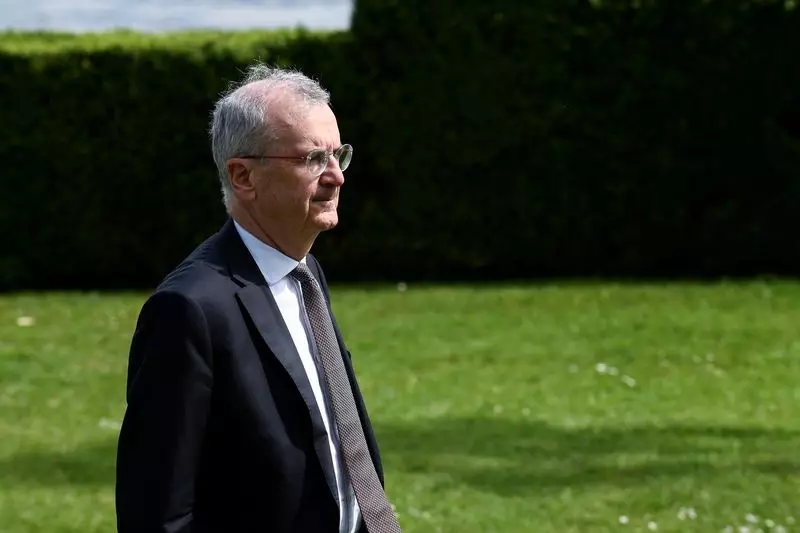In a recent development, two European Central Bank policymakers have stepped forward to advocate for additional interest rate cuts, citing growing confidence in the trajectory of inflation towards the ECB’s target for next year. This comes in the wake of the ECB’s decision to maintain interest rates at their current levels, with President Christine Lagarde refraining from making definitive statements regarding the resolution of high inflation post the COVID-19 pandemic.
French governor Francois Villeroy de Galhau and Lithuanian colleague Gediminas Simkus have emerged as vocal proponents of further rate cuts, aligning themselves with market expectations for two rate cuts in September and December of this year. Villeroy emphasized the reasonableness of current market expectations, indicating a potential decrease in interest rates as per predictions. Simkus echoed a similar sentiment, projecting a significant reduction in rates by up to one percentage point per year, reflecting the trajectory anticipated by money-markets pricing.
Both governors have reiterated their support for the ECB’s forecast, projecting a decline in euro zone inflation from its current 2.5% to the targeted 2% by the second half of next year. Villeroy went as far as characterizing this forecast as more than a mere prediction, indicating a strong commitment towards achieving the inflation target, barring any unforeseen shocks. This resolute stance underscores a unified front amongst policymakers towards fostering stable economic conditions within the euro zone.
Recent ECB surveys have provided valuable insights, indicating a general expectation among companies for moderate price increases and a consensus among economists regarding a gradual deceleration in inflation. The distinction between price growth in services versus the industry sector has also emerged as a notable trend, with services reflecting relatively stronger price growth compared to industry. These findings serve as a crucial backdrop for policymakers in gauging the economic landscape and formulating their decisions regarding interest rates.
Despite these developments, Finnish central bank governor Olli Rehn has voiced concerns regarding a potential prolonged industrial downturn within the euro area. His apprehensions extend to the aftermath of a surge in energy prices following Russia’s invasion of Ukraine, highlighting the need for a robust industrial recovery to safeguard productivity growth. This warning serves as a reminder of the intricate interplay between geopolitical events, economic trends, and policymaking decisions within the euro zone.
The push for further interest rate cuts by prominent ECB policymakers underscores a proactive approach towards managing inflation and ensuring economic stability within the euro zone. The convergence of forecasts, market expectations, and policymakers’ perspectives creates a dynamic landscape that demands careful consideration and strategic interventions to navigate the complexities of the evolving economic environment. It remains to be seen how these deliberations unfold in the coming months and the impact they have on shaping the trajectory of inflation and economic growth within the euro zone.


Leave a Reply